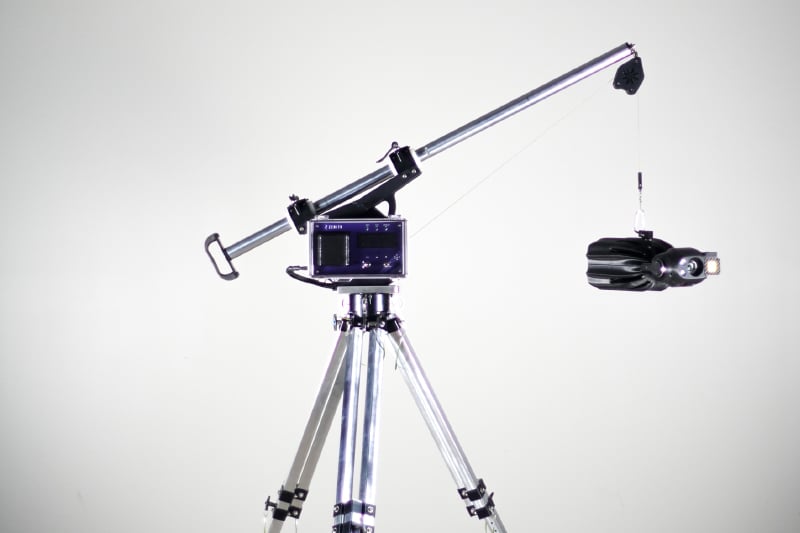Vertical Gas Shaft Inspection: A case study

Vertical shaft inspection has historically been a complex area. Over the years many methods have been hailed as solutions, yet most are still carried out manually with specialist inspectors entering the space, using either ladders or ropes to climb down and obtain the data.
Although common, inspections carried out in this manner create not only substantial risk, but are far from accurate thanks to often difficult access, internal obstacles and human error.
The following details a particularly challenging case involving vertical shaft inspection at a gas distribution plant in Chicago, USA.
The Challenge
In the USA, the current guidelines require a general integrity and corrosion inspection of exposed pipeline to be carried out every three years. Peoples Gas is a Chicago-based natural gas plant that has, up until now, utilised human inspectors to carry out the checks of several vertical shafts that lead down to a network of underground tunnels.
However, this brings with it many potential issues. The first, and most pressing, is the need for humans to enter a dangerous confined space. Previous inspections have required the technicians to climb down an old ladder system within the shafts – something that the company was keen to eliminate from the process.
The second issue was the inconstancy of the data gathered. Not only can an inspector miss smaller defects, but they’re also hampered by where they can access from a ladder. For example, the inspection is limited to what they can see, meaning that areas on the opposite side of the shaft obscured by physical obstacles, such as beams and pipes, cannot be adequately assessed.
The Considerations
This inspection had to remove these two major issues. Regarding safety, this meant that human entry had to be removed from the equation. The company also wanted to ensure that 100% of the asset was inspected.
To achieve this required an advanced inspection that took advantage of the latest technology. It would need the highest grade of data gathering and image capture that could be actioned by an operator who remained outside of the actual shaft.
The Solution
The answer was an innovative and relatively new technology known as The Zenith. This novel stabilised drop camera system has been designed by Interactive Aerial specifically to address the very challenges this task presented.
The system allows the simple operation of an advanced camera that’s fixed above the point of entry using a tripod. Thanks to offering multiple configuration options, this easily coped with the offset access point to the vertical shaft. The unit hangs from a cable with a free-spinning bearing to ensure unlimited rotation.
The image gathering capability is second-to-none, providing 4K video capture, 18MP photos and a 30x optical zoom. This combination means that virtually every area of the shaft can be closely inspected.
Zenith also has a unique, battery-powered Smart Winch system that means there is no manual operation needed throughout the inspection. This was also utilised prior to the inspection to lower a gas detection monitor into the shaft to ensure the area was safe from plumes or gas leaks.
The advantages of using The Zenith to carry out the inspection were as follows:
- Human entry was completely removed from the inspection, with the associated risk reduction
- It was possible to inspect virtually 100% of the asset for integrity
- Thanks to using the automation mode that includes auto-stabilisation of the unit, a combination of horizontal and vertical panoramas allowed for simplified and fast data gathering
- Automation removes the risk of human error and is of a consistently high quality
- The time taken for the inspection was dramatically reduced, therefore asset downtime is also far shorter
- Each image taken is automatically tagged
- All data is presented in a standardised data set to allow the engineering team to assess the health of the asset quickly and easily
- Data is easily stored ready for the next inspection, allowing engineers to accurately track corrosion rates from one inspection to the next
Next-Generation Equipment Procurement Process by Nexxis
Innovative and proven technological advancements not only improves the inspection process, but they also bring a much-needed reduction in time to what have always been lengthy processes.
Plant and/or asset shut down for mandatory inspections or for repairs is a necessary evil, but the ability to shorten the timescales directly impacts an organisation’s baseline profits. Equipment specialists, Nexxis, is at the forefront of such technology. This, combined with an in-depth knowledge of the Oil & Gas, Petrochemical and Mining industries allows for an individual approach to equipment needs.
The Zenith is but one example of how technology can address many inspection issues. It’s this solutions-based approach that means Nexxis is fast-becoming the provider of choice for those in the know.
Find out more about The Zenith or contact us today for a no-obligation chat.
